It All Comes Down to Executive Function
Positive behavior is dependent upon strong executive function. Punishments and bribes will do little to change behavior. We have to get to the root causes of behavior problems. A very important root cause is a lack of developmentally appropriate executive function.
Academic achievement depends on executive function. Mental and emotional wellness depend upon executive function. Social skills depend upon executive function. And exhibiting appropriate behavior depends upon executive function. So, tackle behavior at the foundational level of executive function.
The great news is: The part of the brain that handles executive function is extremely “plastic” — able to grow and change quickly. The more you use it, the better it gets! So increasing executive function, and thus behavior, is a matter of exercising that part of the brain. Schools can take intentional steps — inside and outside of the classroom — to build students’ executive function.
To get started, take a look at 40 key skills of executive function, categorized in my book Building Executive Function: The Missing Link to Student Achievement, and identify all that have an impact on student behavior. (Read the chart from the bottom up!) Below the skills, I share three tools that focus on building executive function that can positively affect behavior.
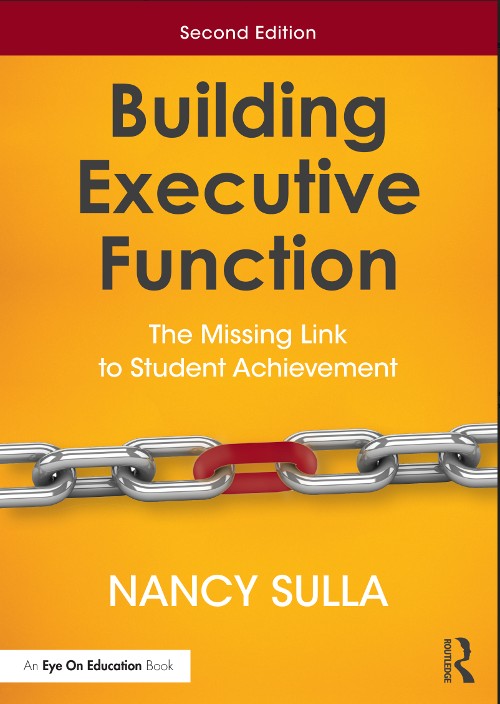
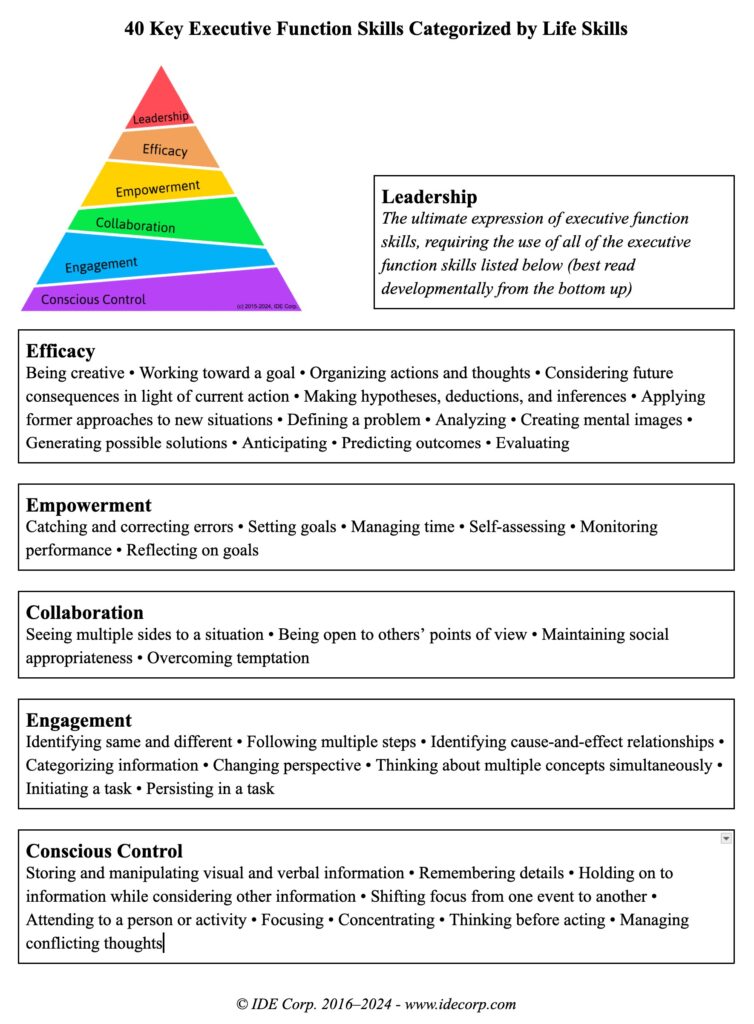
Student Focus Card
(Access this resource at https://www.myqportal.com/Share.asp?ID=1537 — this is the free portion of a product, so just click through to see the resource. Download a PDF or Word version on the right; the link to the Spanish version is there as well.)
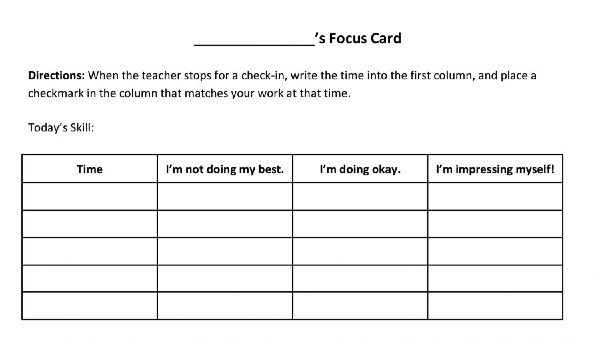
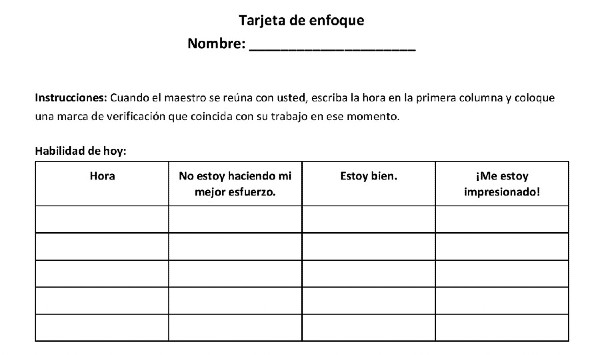
This tool strengthens key executive function skills for conscious control, which is essential to exhibiting appropriate behavior. To start, give every student a card to keep with them or on their desk. At some point, the teacher uses a signal (such as a chime) to have students, in the moment, stop and self-assess.
The intent is to provide focus on how well each student is doing in attending to their work. Teachers can use this to discuss behavior with the student, set goals, have students talk with one another about what it takes to stay focused and on task, etc. Use this as a tool for growth and improvement, and never as a tool for shame and punishment.
Student Persistence Card
(Access this resource at https://www.myqportal.com/Share.asp?ID=1535 — this is the free portion of a product, so just click through to see the resource. Download a PDF or Word version on the right; the link to the Spanish version is there as well.)
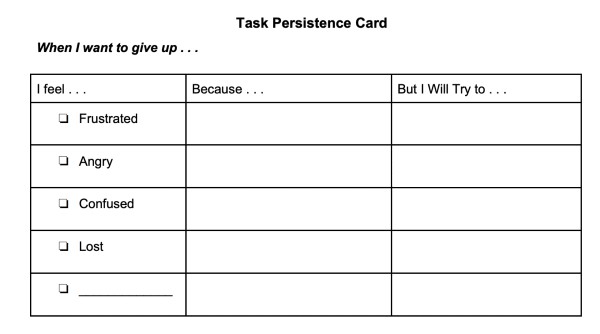
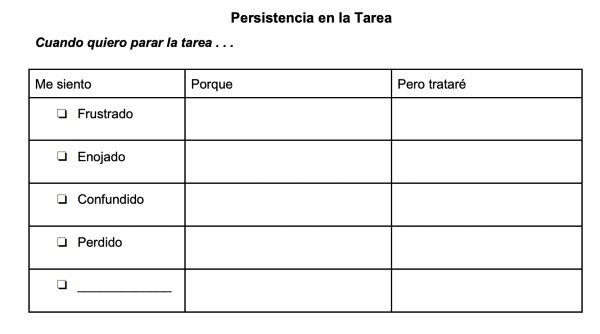
Taking it a step further, this tool asks students to further strengthen the executive function skills of conscious control toward engagement (e.g., persisting in a task). In this case, at the point they want to give up, and potentially misbehave, they use this card to assess how they are feeling, why they are feeling this way, and what they could do differently to push through. (Note: At first, students may need the teacher or an aide to work through the card with them.) Many executive function skills will be exercised in the process.
Teachers can first use this card with the entire class, asking them to think about a time they were frustrated and quit, or wanted to quit. Have them work through the card based on that scenario and introduce the card as a tool to use in the moment. Then, as situations arise, teachers can initiate the use of the card as a tool for moving through. The intent is for students to eventually retrieve a card when they need it and use it to work through a problem situation.
“If … Then” Implementation Card
(Access this resource at https://www.myqportal.com/Resources/Resource.asp?ID=1490 — this is the free portion of a product, so just click through to see the resource. Download a PDF or Word version on the right; the link to the Spanish version is there as well.)
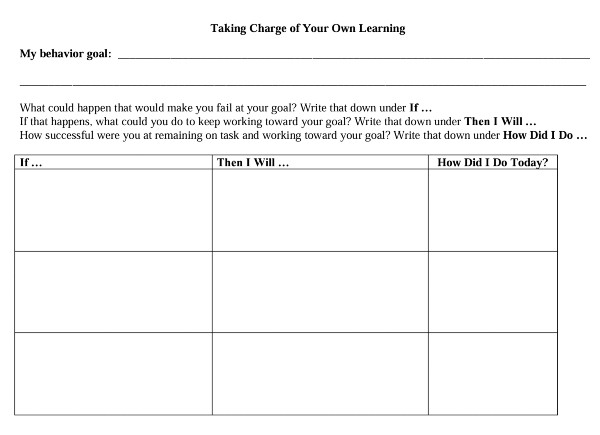
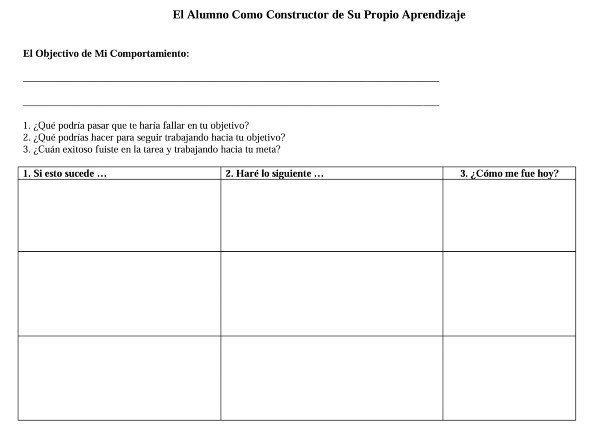
A next step is to have students think in advance of an incident. Teachers can work with the entire class to have them think about the kinds of situations that cause them to get off task, tune out, exhibit less-than-desirable behavior, and so on. Students identify three such situations and decide, if the “trigger” situation happens, what will they do to avoid being triggered by it? Then, each day, students self-assess regarding their reaction to such situations.
Call to Action!
Let’s help students take control of their behavior rather than being caught in a deficit-cycle of poor behavior and punishment. This approach focuses on building executive function and, thus, is asset-based rather than taking a carrot-and-stick approach of rewards for good behavior. When students take control of their own learning and growth, the reward is intrinsic and powerful.
- • Download the tools above and share them widely with teachers . . . and even parents!
- • Explore more in a prior blog post: “Promote Student Success Through Executive Function.”
- • Join us for a “Virtual Learning Community” on executive function — online courses facilitated by a consultant: edquiddity.com/VLC
- • Schools: Enroll your faculty in our online, on-demand, Professional Learning Experience: “Building Executive Function: The Path to Student Achievement.” Use all of the resources to create a culture of professional learning around this important topic. Contact solutions@idecorp.com for a demo.
